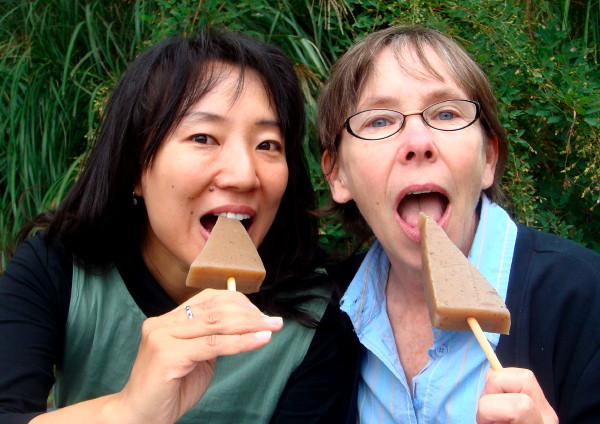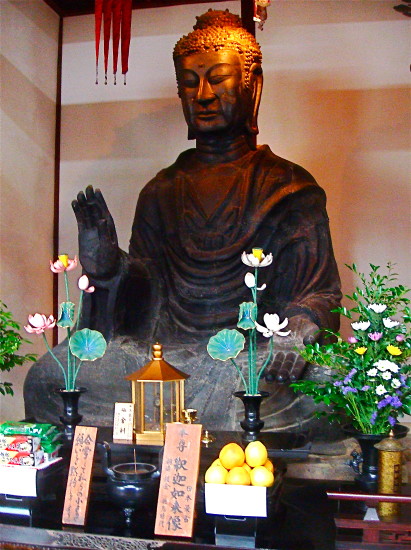 |  |
 |
| Original Japan |       | |
Original Japan
Returning To NaraNara is among our favorite places in Japan. Most people know Nara as the home of the Great Buddha, one of the most impressive statues in the world, and a UNESCO World Heritage Site. But we saw it on our two earlier visits, as well as Horu-ji Temple, another World Heritage Site (there are 8), and the back streets of old Nara. The best reason for us to visit Nara is that it is home to our friends Junko and Shinya Kamimura, and Junko's parents Kazuyo and Wataru Imura. Wataru is a credentialed expert and guide for Nara, and he led our tour of Nara's National Treasures. |
|||||||||
Shinya, L, J, Kazuyo, Wataru, Junko |
|||||||||
| Lunch! | Lucky for us the first place he led us to was an elegant restaurant near Yakusu-ji Temple
(yes, it's also a World Heritage Site!),
where we enjoyed a delightful luncheon.
This plate is one of several in our (bento) "box lunch"!
|
||||||||
| Yakushi-ji | Well fortified, we went to Yakushi Temple. It was planned by Emperor Temmu in A.D. 680 to pray for his ailing wife,
but he died before it was completed.
His wife recovered, becoming Empress Jito, and finished the temple in 697. Appropriately, the temple is
dedicated to healing.
|
||||||||
| Fires
regularly damaged the temple, with the worst coming in 1525 when the
West Pagoda (left) burned down. It was rebuilt only recently, along
with other buildings in the complex. New and Ancient, both are
beautiful. One art critic described the old one as "frozen music." An
apt metaphor.
|
|||||||||
| Among the artifacts at the temple are the bussoku-seki, or Buddha's Footprints, carved in 753
(a National Treasure) from
a rubbing from China. Photographs were not allowed, but this photo of a copy in Tokyo shows you
what we saw.
|
|||||||||
| Terraced Rice | Near Nara is a region where rice is grown in terraced fields using traditional methods, so the next day we drove
out for a look around.
|
||||||||
| We
walked among the paddies, inspecting the rice, whose leaves are still
intense green but whose husks are now golden. The red spider lilies are
weeds growing everywhere between the fields -- they don't have leaves
during this season, only stems and blossoms; from above, they look like
Celtic knots. The two happy looking monks were part of a scarecrow
contest there. They don't seem very scary, but then we didn't see any
crows around either.
|
|||||||||
| Ancient Burial Site | The beautifully named "Tomb In The Peach Fields" is a burial site for the powerful Soga-no-Umako family, constructed in 626. That was, of course, long before power equipment. J is standing inside the chamber. | ||||||||
|
|
|||||||||
| Picnic! | Junko and Julie are not eating chocolate popcicles for lunch, but konjak skewers. These are
a savory gelatin made from the plant (Amorphophallus konjac) popularly known as devils tongue.
|
||||||||
| Asuka-ji | We visited one more temple during the weekend, the oldest in Japan. The Asuka Temple was founded in 506 and contains this,
the oldest Buddha in Japan, constructed in 609.
|
||||||||
| Man'yo Poets | Excavations
around the temple reveal that substantial industry developed here
during the Asuka Period (593-710). In the museum dedicated to this
area, we also learned that poetry flourished. It was delightful to find
a museum that dedicated significant space to poets and poetry. Some
1416 poems remain, and many seemed quite modern to us, like this one,
by an unknown author:
|
||||||||


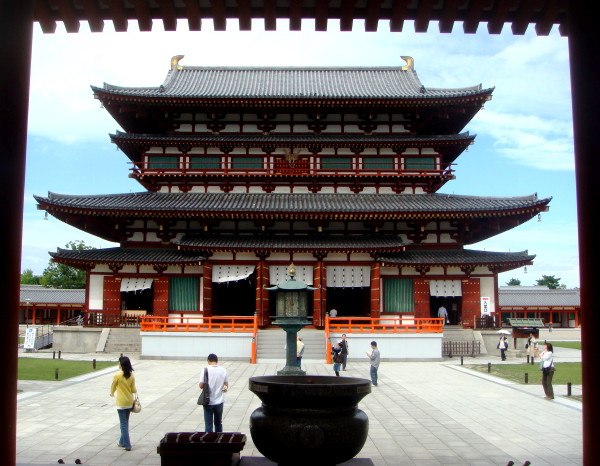
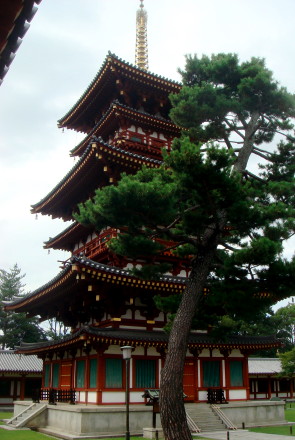 x
x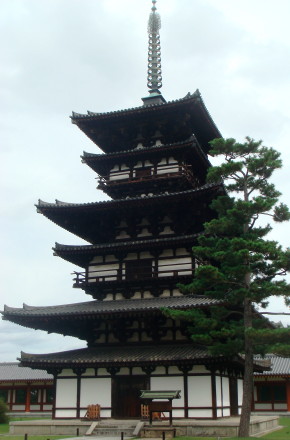

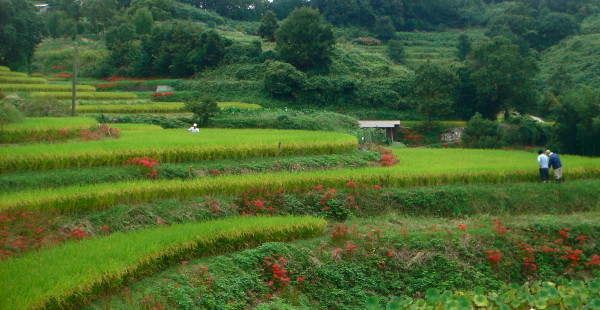
 x
x x
x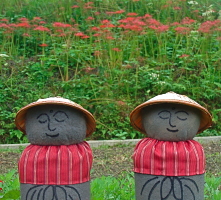
 x
x
